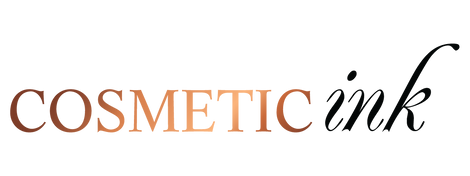When it comes to cosmetic tattooing—whether you're working on brows, eyeliner, or lips—understanding the difference between organic and inorganic pigments is essential. At Cosmetic Ink, we stock a curated selection of world-renowned pigment brands such as Perma Blend, Li Pigments, Monica Ivani, Tina Davies, Mara Pro and hybrid lines like Evenflo, Biotek and Hanafy. This guide breaks down what “organic” and “inorganic” really mean in the world of PMU (Permanent Makeup), and when each type might be the right fit for your client.
What Are Organic Pigments?
Organic pigments are carbon-based colourants that often produce brighter, more vibrant shades. In PMU, organic pigments are especially common in lip tattooing, where rich reds, pinks and corals are in demand.
Pros of Organic Pigments:
-
Highly vibrant and bold colour payoff
-
Smooth consistency for detailed work
-
Often longer lasting on the skin
-
Great for lip blush and full lip colour
Considerations:
-
May fade to cooler or warmer tones over time
-
Can be more difficult to remove or correct
-
Not ideal for powder brows or soft shading unless expertly diluted
Popular organic-heavy brands:
Perma Blend and Tina Davies have many organic shades used widely in lip PMU.
What Are Inorganic Pigments?
Inorganic pigments are typically mineral-based, made with compounds like iron oxide or titanium dioxide. These pigments tend to be softer, more muted, and are commonly used for eyebrows and eyeliner.
Pros of Inorganic Pigments:
-
Natural-looking healed results
-
Easier to fade and adjust over time
-
Lower risk of allergic reactions
-
More forgiving in correction work
Considerations:
-
Less vibrant than organic pigments
-
May fade faster, especially on oily skin
-
Can require more frequent touch-ups
Common uses:
Inorganic pigments are ideal for powder brows, combo brows, and eyeliner where subtlety and definition are key.
What Are Hybrid Pigments?
Some pigment brands have formulated hybrid lines, blending the best properties of both organic and inorganic pigments. These are designed to balance vibrancy with softness and are especially versatile for artists who want controlled results with good staying power.
Examples of hybrid pigment brands:
-
Hanafy: Known for its balanced, pre-modified brow and lip shades. Hanafy also have an inorganic brow line of pigments known as their mineral range.
-
Biotek: Offers rich colour without overwhelming saturation, suitable for multiple PMU areas
Matching Pigments to Procedure
Here’s a quick reference to help you choose:
-
Brows: Inorganic or hybrid pigments are best. They offer a natural healed result and are easier to correct or modify.
-
Eyeliner: Inorganic pigments (especially carbon-free) are safest, as they are more stable in the skin. Organic range offers the best staying power and offers super black colour however must be applied into the skin superficially to avoid migration. This is suitable for use by experienced artists.
-
Lips: Organic or hybrid pigments are often preferred due to their rich colour and staying power.
Final Thoughts
Both organic and inorganic pigments have their place in cosmetic tattooing. What matters most is understanding how they behave, how they heal, and how they interact with your client’s skin and lifestyle. At Cosmetic Ink, we offer expert-vetted pigments from trusted PMU brands to suit every style and skin tone—because better pigment knowledge leads to better healed results.

